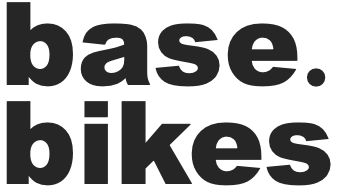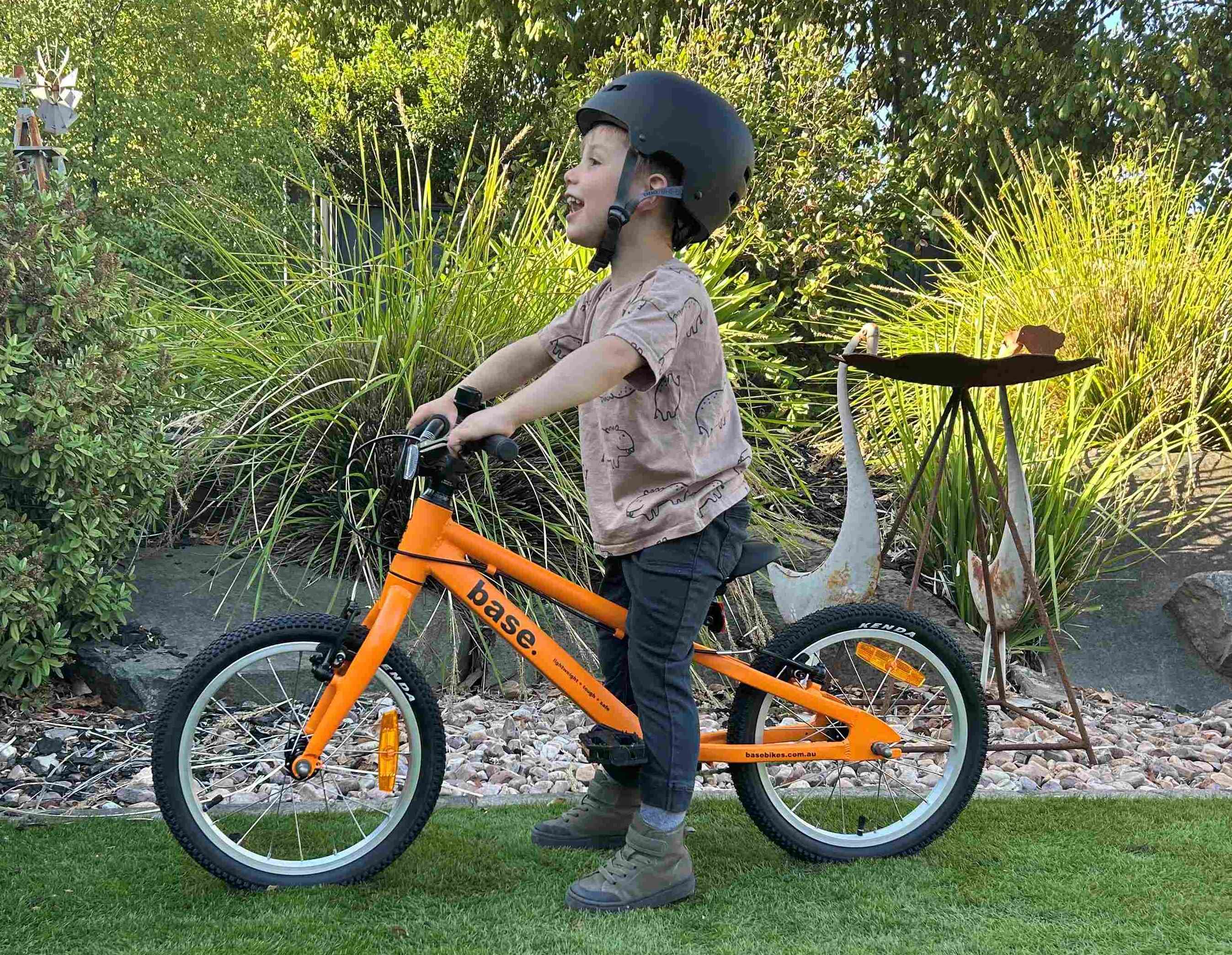Why fit matters (for confidence, safety, and family time)
When a bike fits, starting feels natural, steering feels steady, and stopping feels predictable. That means fewer spills, less frustration, and more “can we go again?” With a well-fitted bike, children build skills faster—and families get more relaxed loops around the park or to school.
If a bike is too big (or too heavy), many children feel nervous, struggle to push off, and may avoid riding. Too small, and pedalling becomes cramped and tiring. The goal is a bike that fits now, matched to your child’s height, inseam and confidence.
How to size a kids’ bike
1) Measure inseam (most important)
Have your child stand tall in shoes, back to a wall. Place a thin book gently between their legs like a saddle; measure from floor to the top of the book. Note the number in centimetres. You can check our video to show you how on our bike sizing page.
2) Note height (useful cross-check)
Height helps sanity-check wheel size ranges but inseam is the sizing anchor at this age.
3) Match to seat-height range (not just wheel size) or manufacturer guide
Check the bike’s minimum and maximum seat height. Your child’s inseam should sit within that range. As a rule of thumb, a beginner’s inseam should be roughly equal to (or slightly above) the bike’s minimum seat height; confident riders can go a little higher. Alternatively, most manufactures provide a sizing chart you can refer to. You can read more about base bikes sizing here.
Standover check: with feet on the ground and the bike between their legs, there should be a couple of centimetres clearance over the top tube.
Set seat height by confidence (heels down vs toes down)
-
Timid or beginner riders: Set the saddle so both feet rest flat on the ground when seated (heels down).

This maximises stability and helps them practice starts/stops without fear. -
Confident riders: Raise the saddle so only the balls of the feet touch (toes down).

This gives a slight knee bend at the bottom of the pedal stroke for better power and smoother pedalling.
You can begin “heels down” and gradually move towards “toes down” as confidence grows.
Typical wheel sizes by age (guide only)
Every child (and frame) is different; use inseam first, age only as a cross-check.
-
12″ ≈ 2–4 yrs
-
14″ ≈ 3–5 yrs
-
16″ ≈ 4–6 yrs
Some taller or very confident 5-year-olds may edge towards 18–20″, but avoid skipping sizes if it harms current control.
Between sizes? Choose based on confidence. A slightly smaller, easy-to-handle bike often builds skills faster than an oversized “grow-into” bike.
Signs the bike doesn’t fit (and quick fixes)
Too big
-
Tip-toes only or leaning the bike to get a foot down
- Struggling to reach bars or control steering
-
Frequent wobbling, hesitancy to ride
Quick check: lower the saddle; if control is still poor, size down.
Too small
-
Knees rising very high or bumping bars/frame
-
Seat already at maximum height yet legs still cramped
-
Slow, choppy pedalling with little power
Quick check: raise the saddle; if still cramped, it’s time to size up.

Features that make riding easier (beyond size)
-
Lightweight frame and parts: A couple of kilograms matter a lot to a 15–20 kg child. Lighter bikes are easier to start, steer and stop—and easier for parents to carry when little legs tire.
-
Kid-specific geometry: Low standover, stable handling, proportionally shorter cranks and a narrower Q-factor (distance between pedals) support natural posture and balance.
-
Hand brakes (no coaster/back-pedal brake): Child-sized, easy-reach levers help kids learn the same braking they’ll use later. Coaster brakes can trigger accidental stops during balance practice.
These details don’t replace good fit—but they amplify it.
Bringing it together
-
Measure inseam;
-
Choose a bike with a matching seat-height range;
-
Set the saddle heels down for beginners or toes down for confident riders;
-
Adjust as skills grow. A lighter, kid-specific bike with proper hand brakes will make learning smoother and family rides more enjoyable.
That’s the heart of it: the right fit now builds confidence, keeps rides safe, and turns small circles around the park into easy, happy routines you’ll both look forward to.
You can use our bike sizer quiz to help you find the perfect fit for a base bike.

